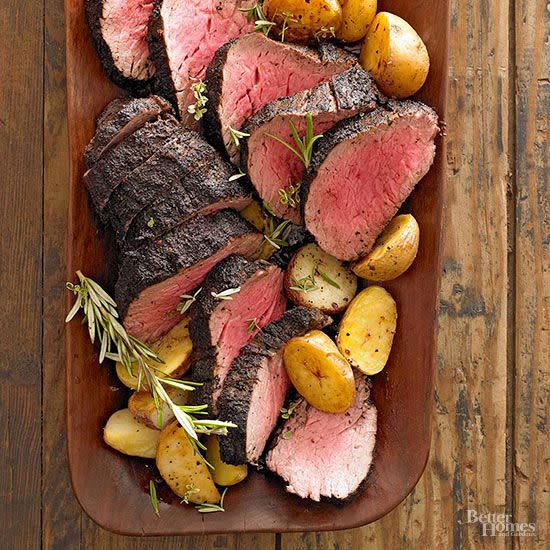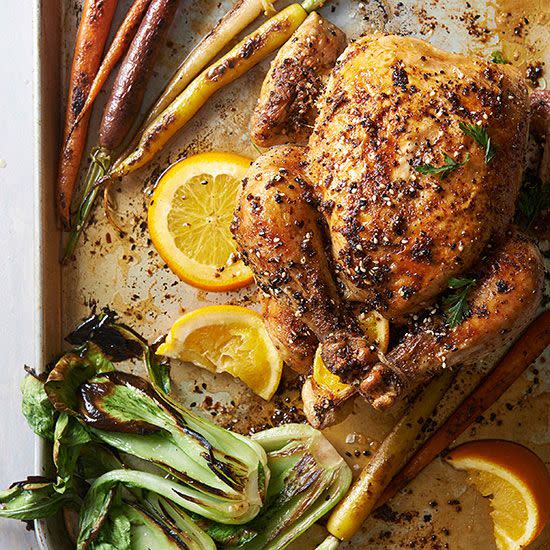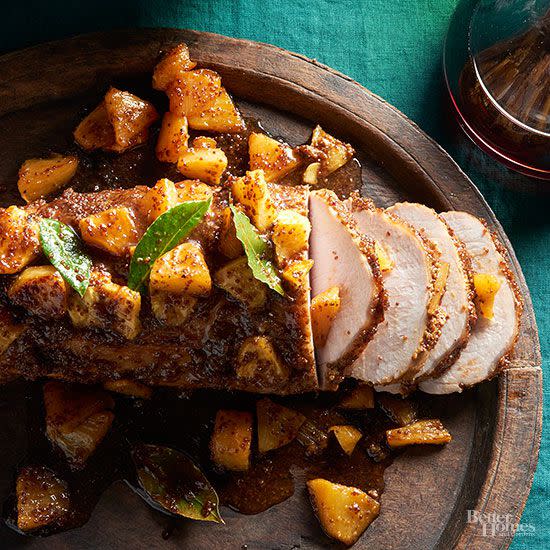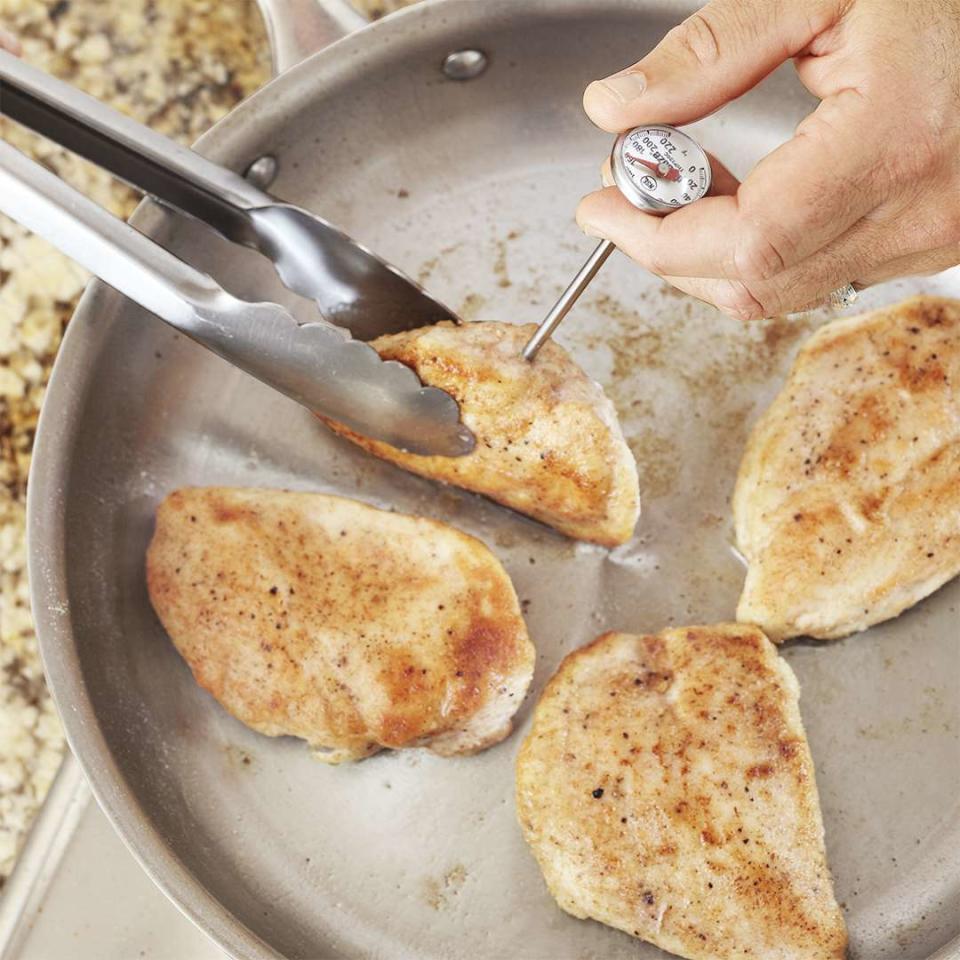How to Roast Meat
Crank up your oven! Roasting is a super easy and tasty way to serve up tender slices of beef, pork, poultry, lamb, and veal. We'll teach you the basics of how to do it, and our handy-dandy guide will tell you exactly how long to roast each cut of meat, right down to the pound. Whether you're roasting a pound of pork tenderloin or a 10-pound rib roast, we have all the info you need to guarantee it comes out plate-scraping good.
Roasting Basics

Roasting is one of our favorite set-and-forget cooking methods. As an added bonus to the rich, slow-cooked flavors, roasting fills your house with warm and delicious aromas.
This dry-heat method of cooking is well-suited to large cuts of meat, poultry, and fish. It can also be used to caramelize the natural sugars in fruits and vegetables to make even picky eaters fall in love with the flavors.
Food is usually roasted in an uncovered pan in the oven. Because roasted foods are cooked at high heat with little―if any―added moisture, they take on a crusty browned exterior and a moist interior. When choosing a roasting pan, search for the "Goldilocks" fit—not too big and not too small. No part of the food should hang out of the pan, but if the pan is too small, any juices that are released will likely burn. The food should fit comfortably with no more than an inch or two of space between it and the sides of the pan. If you like to use the drippings from a roast or chicken to make gravy, invest in a heavy aluminum pan that can be placed directly over a flame or electric burner.
A roasting rack helps elevate the food out of any juices it releases so that it truly roasts and does not stew or steam, ensuring the delicious crust and crispy skin that are part of the appeal of roasted foods.
How to Roast Poultry

You'll definitely want these tips handy for your Thanksgiving turkey, but you can put them to good use during the rest of the year, too! Follow the roasting tips below for poultry. Since birds vary in size, shape, and tenderness,
.
For an unstuffed bird, if desired, place quartered onions and celery in body cavity. Pull neck skin to back and fasten with a skewer. If a band of skin crosses the tail, tuck drumsticks under the band. If there is no band, tie drumsticks to tail with 100-percent-cotton kitchen string. Twist wing tips under the back. For a stuffed bird, just before cooking, spoon stuffing loosely into the neck cavity; fasten neck skin as for an unstuffed bird. Lightly spoon stuffing into body cavity. Secure drumsticks and wings.
Place bird, breast side up, on a rack in a shallow roasting pan; brush with cooking oil and, if desired, sprinkle with a crushed dried herb such as thyme or oregano. (When cooking a domestic duckling or goose, prick skin generously all over and omit cooking oil.) For large birds, insert a meat thermometer into center of one of the inside thigh muscles. The bulb should not touch the bone. For smaller birds, check the temperature with an instant-read thermometer near the end of the cooking time.
Cover Cornish game hens, pheasants, and whole turkeys with foil, leaving air space between the bird and the foil. Press foil lightly at ends of drumsticks and neck to enclose the bird. Leave all other types of poultry uncovered.
Roast in an uncovered pan. When the bird is two-thirds done, cut band of skin or string between drumsticks. Uncover large birds for the last 45 minutes of cooking; uncover small birds for the last 30 minutes. Continue roasting until the meat thermometer registers 175°F (check temperature of thigh in several places) or until drumsticks move easily in their sockets. Center of stuffing should register at least 165°F. (In a whole or half turkey breast, bone in, the thermometer should register 170°F. For a whole boneless breast, it should register 165°F.) Remove bird from oven and cover it with foil. Allow whole birds and turkey portions to stand for 15 minutes before carving.
How to Roast Beef, Pork, Lamb, and Veal

Showstopper dinners, here we come! While they're a little different than the instructions for roasting poultry, these steps will still give you tender, juicy, melt-in-your-mouth meat. Follow these tips for roasting beef, lamb, pork, and veal. To know how long to roast each cut of meat, be sure to check our roasting guide.
Place the meat, fat side up, on a rack in a shallow roasting pan (bone-in rib roasts don't need a rack). Insert a meat thermometer into the thickest part of the roast (or check with an instant-read thermometer near the end of the cooking time). Don't add water or liquid to the pan, and don't cover it.
Roast in a 325°F oven (unless the chart or your recipe says otherwise) for the time given and until the thermometer registers the correct temperature for your desired doneness.
Remove the meat from the oven and tent with foil. Let stand for 15 minutes before carving. The meat's temperature will rise to the standard for medium rare (145°F) and medium (160°F) during the time it stands.
How to Use a Meat Thermometer

A meat thermometer helps you roast perfectly cooked meat every time. To be sure you get an accurate reading, insert the thermometer into the center of the largest muscle or thickest portion of the meat. The thermometer should not touch any fat or bone. When the meat reaches the desired doneness, push in the thermometer a little farther. If the temperature drops, continue cooking. If it stays the same, remove the meat. Cover the meat and let it stand about 15 minutes before carving. (It will continue to cook while standing.)

